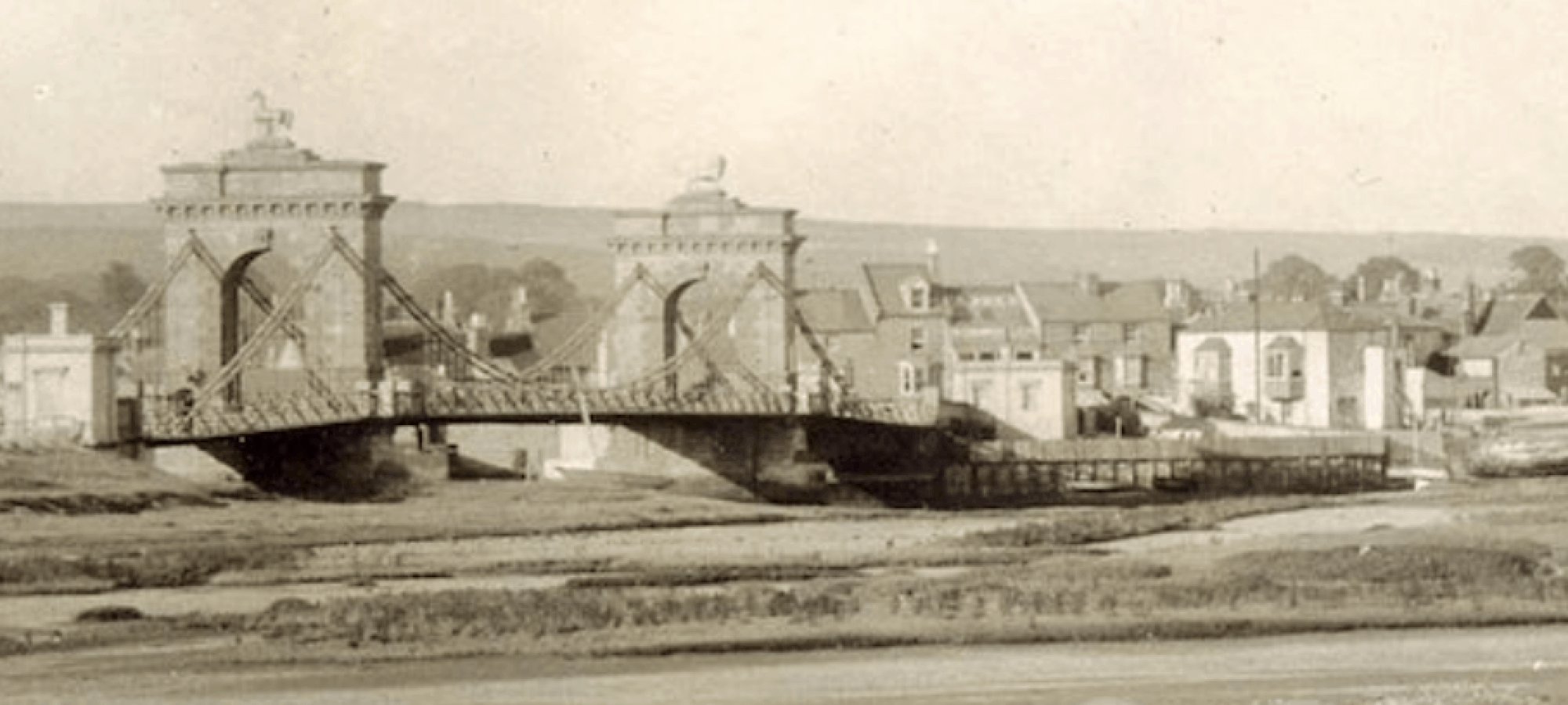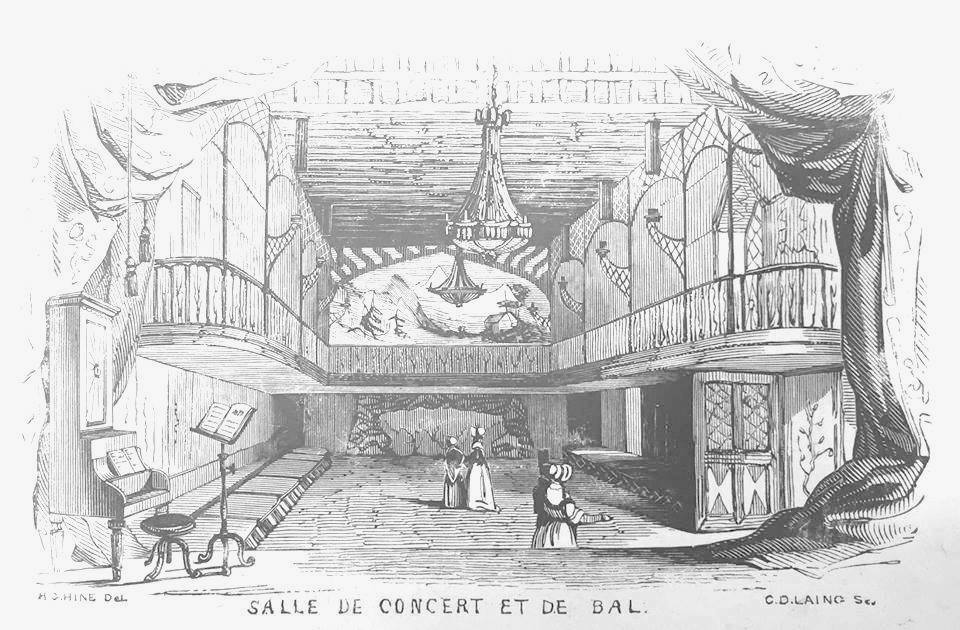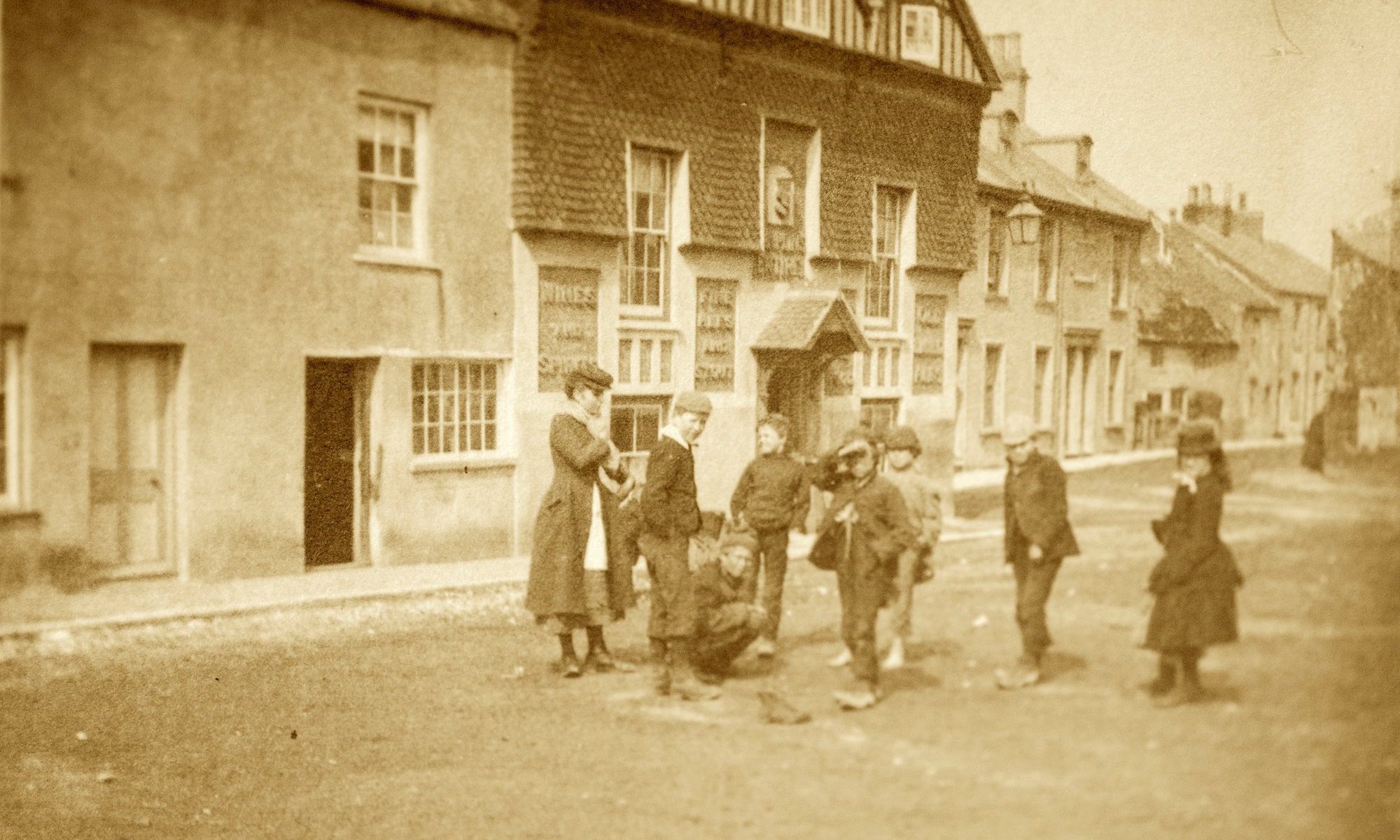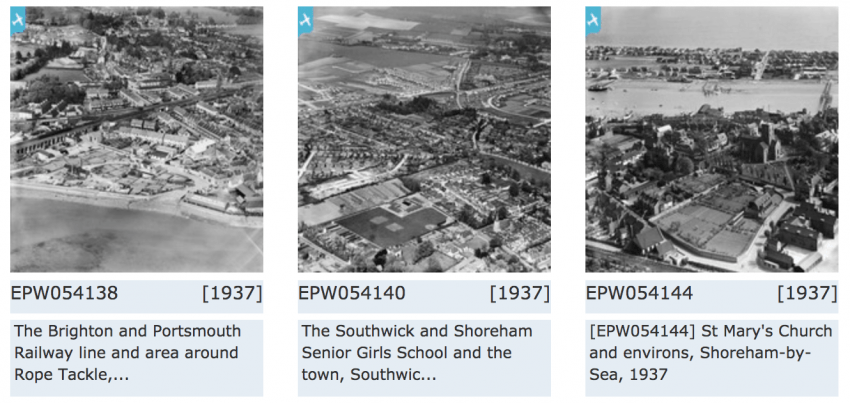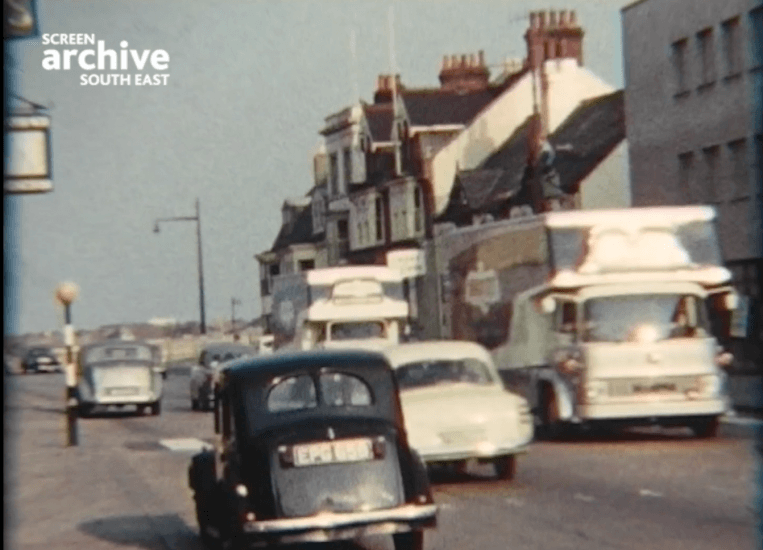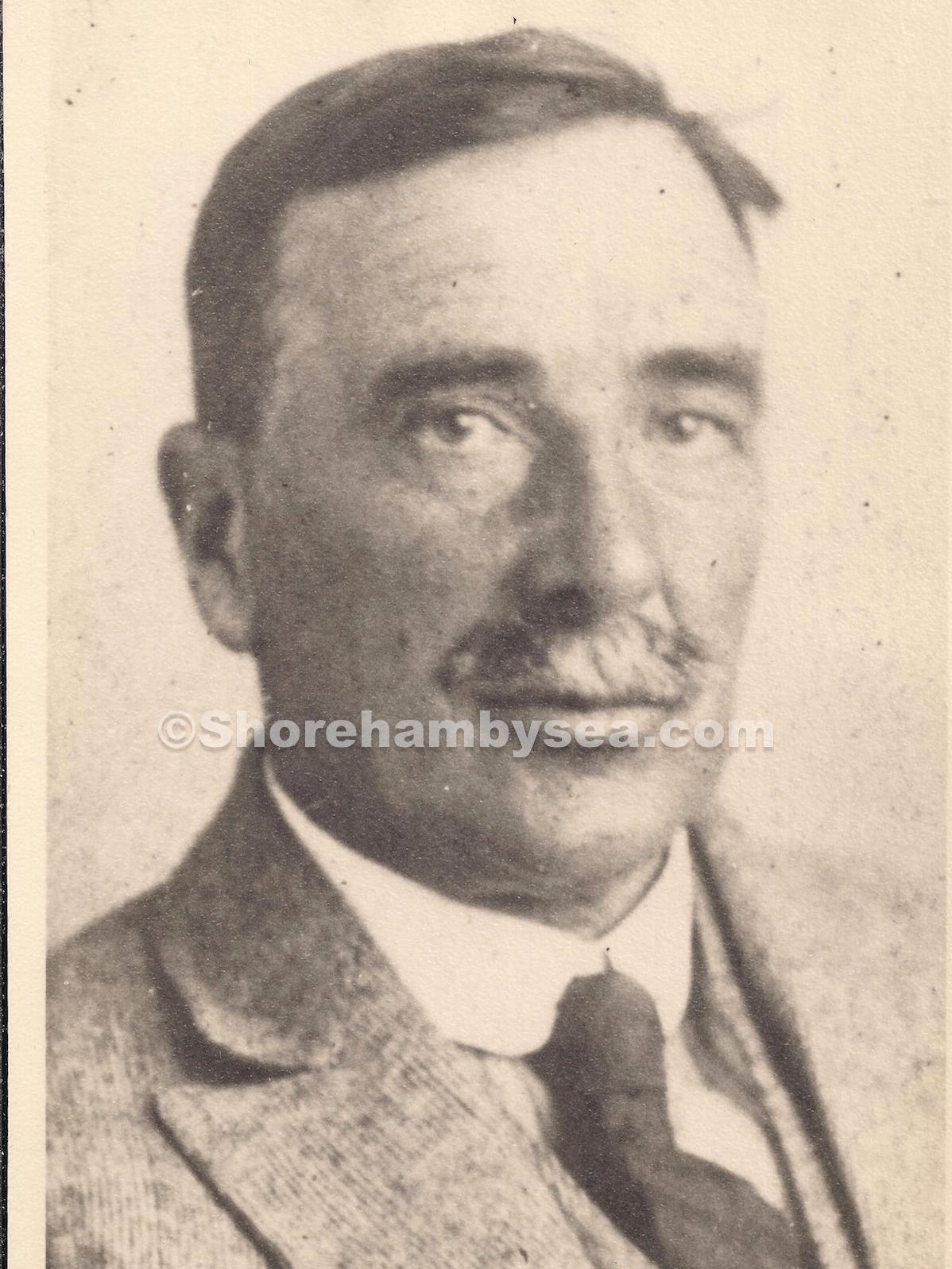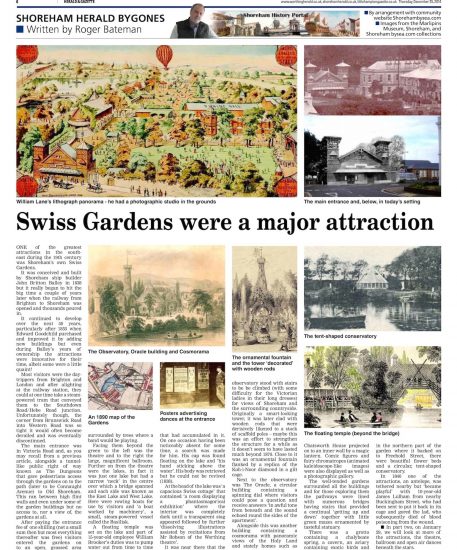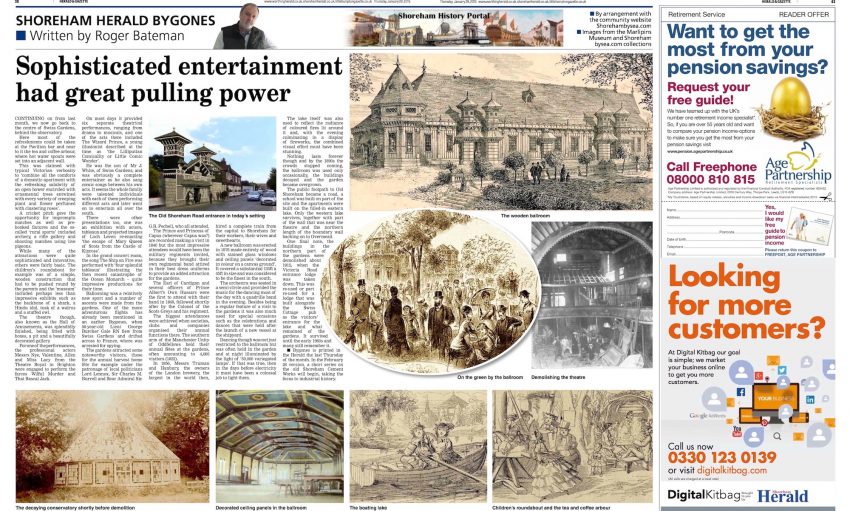In 1782 Shoreham shipbuilder John Edwards is shown as owning land called ‘David’s Marsh’ where today’s Swiss Gardens School now stands, together with, just below it, ‘a meadow embanked.’ This was later acquired by his son-in-law John Britten Balley, his partner in the ship building business. Hitherto, the area had been unsuitable, marsh-land saturated by the waters of the Northbourne Stream on its last stretch before it emptied into the River Adur. The stream’s embankment of 1782 largely cured all that providing Balley with an opportunity to develop the land.
Continue reading “Swiss Gardens – The Early Years”Widewater and High Path
The Samuel Butler Collection, 1891 Shoreham Photos
Over the years local historian Neil De Ville has assembled a huge collection of old views of his home town Southwick, nearby Shoreham and of the people that once lived there. Each new acquisition entailed research to accurately identify locations, individuals and their background that collectively have resulted in a comprehensive record of the area’s social and architectural history.
During one recent search Neil happened across three stunning Shoreham photographs he had not seen before that were taken in the 1890’s. These were from the Samuel Butler Albums held by the St. John’s College Library in Cambridge. Samuel Butler (1835 – 1902) was an accomplished writer, artist and photographer. His photograph collection is considerable, recording as it did the people and places he visited both in this country and abroad. The images make up an important social history record of those times and we are lucky enough for him to have chosen Shoreham as one of the places in which to take his photos.
Continue reading “The Samuel Butler Collection, 1891 Shoreham Photos”Aerial Photographs of Shoreham
Britain from Above:
LINK to the extensive archive of aerial photographs exists at www.BritainfromAbove.org.uk. This link will take you to the Shoreham specific images from the 1920’s onwards. You can zoom in if you are a registered user of the site.
Continue reading “Aerial Photographs of Shoreham”Paul Plumb’s Cine Films from 1960’s
Paul Plumb was a Shoreham resident and prolific amateur film maker.
A River Runs Through our Town (1962)
Continue reading “Paul Plumb’s Cine Films from 1960’s”
Poll Book 1784
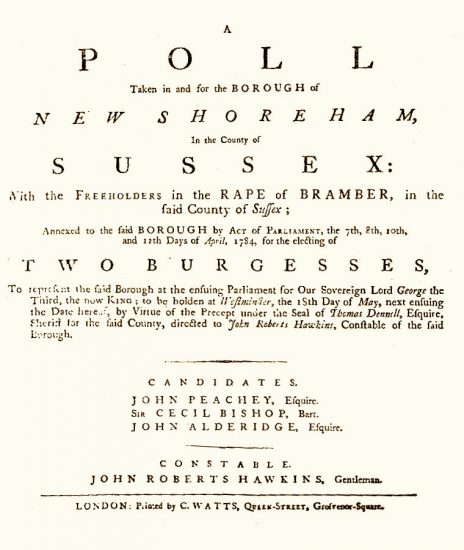
Freeholders that lived in or held land in Old or New Shoreham, Southwick or Kingston who voted in the 1784 Poll
The Robertsons and their Bungalows
Alexander Duff Robertson, the son of a Scottish industrialist, began business as the proprietor of a laundry in London. He later became predominantly involved in property development both in London and Shoreham. During WW1 he was a captain in the RFC/RAF and afterwards served on Shoreham‘s Urban Council.
Alexander purchased land on Shoreham Beach and went on to build a number of bungalows there for himself, his family and to let out. During their time in Bungalow Town the building work and subsequent residency in their homes was uniquely recorded in a collection of photographs and ephemera that have been generously donated by a descendant who bears the self same names of his forbear.
Swiss Gardens – Shoreham Herald Articles
Very Old Maps
 1622 Shoreham to Lancing Marshes Map – Although lacking in some detail and is incomplete (the original has the extreme west part missing) this is probably one of the earliest large scale maps of the area. Surveyed and drawn by George Randoll , presumably for the then owners of the land, it came into the hands of the Petworth Estate in 1784 when they purchased Pad Farm and some of the marshes. It shows the main course of the river around Old and New Shoreham. Unusually orientated north to south it covers the area from Well Dyke (near today’s Sussex Pad site) to the ‘Stoane Beatche’ (which shows the build up of the Shoreham Beach spit or peninsula – this is thought to have been long established and even by the 17th century the river is believed to have entered the sea as far west as Southwick). From east to west the map originally covered from Shoreham to Worthing Gate (map piece missing – now known as Teville Gate). Text in the top left corner refers to the submerged village of Pende reads ‘In this place being distant from the shore in the sea (axer?) could wales (rocks) to be (seen?) at low water which are commonly called axaparte – the old name for Pende. A ferry is shown at Old Shoreham where the toll bridge is now – the Lancing and Well Dyke ‘shoppes’ were, of course , workshops. Were these offshoots of the river man made for drainage or naturally formed? Apart from the main river little or nothing of them in their original position remains now although the section from ‘Salte Mershes’ opposite Old Shoreham down to ‘Lyttel Iland’ seems to have survived up to 1780 alongside a road through what is now the airport (Map5a) and although that road can still be seen on the 1912 map (Map12b) the ditch itself has disappeared.
1622 Shoreham to Lancing Marshes Map – Although lacking in some detail and is incomplete (the original has the extreme west part missing) this is probably one of the earliest large scale maps of the area. Surveyed and drawn by George Randoll , presumably for the then owners of the land, it came into the hands of the Petworth Estate in 1784 when they purchased Pad Farm and some of the marshes. It shows the main course of the river around Old and New Shoreham. Unusually orientated north to south it covers the area from Well Dyke (near today’s Sussex Pad site) to the ‘Stoane Beatche’ (which shows the build up of the Shoreham Beach spit or peninsula – this is thought to have been long established and even by the 17th century the river is believed to have entered the sea as far west as Southwick). From east to west the map originally covered from Shoreham to Worthing Gate (map piece missing – now known as Teville Gate). Text in the top left corner refers to the submerged village of Pende reads ‘In this place being distant from the shore in the sea (axer?) could wales (rocks) to be (seen?) at low water which are commonly called axaparte – the old name for Pende. A ferry is shown at Old Shoreham where the toll bridge is now – the Lancing and Well Dyke ‘shoppes’ were, of course , workshops. Were these offshoots of the river man made for drainage or naturally formed? Apart from the main river little or nothing of them in their original position remains now although the section from ‘Salte Mershes’ opposite Old Shoreham down to ‘Lyttel Iland’ seems to have survived up to 1780 alongside a road through what is now the airport (Map5a) and although that road can still be seen on the 1912 map (Map12b) the ditch itself has disappeared.
Reproduced by permission of Lord Egremont.
Ship Arrivals & Departures 1837-1842.
A selection of newspaper cuttings providing five year example of ship movements in and out of Shoreham port during the 19th century. The ship’s name is followed by the surname of the captain then the port sailed from or to. From early 1840 the cargo carried is also given.
The British Library Newspaper Archive is a massive and absolutely fascinating resource and thanks must go them for their permission in allowing these images to be reproduced (www.britishnewspaperarchive.co.uk). Please also note that in copyright images belong to Northcliffe Media Limited and out of copyright images belong to The British Library. Continue reading “Ship Arrivals & Departures 1837-1842.”
